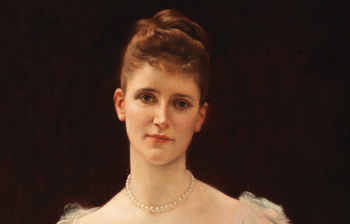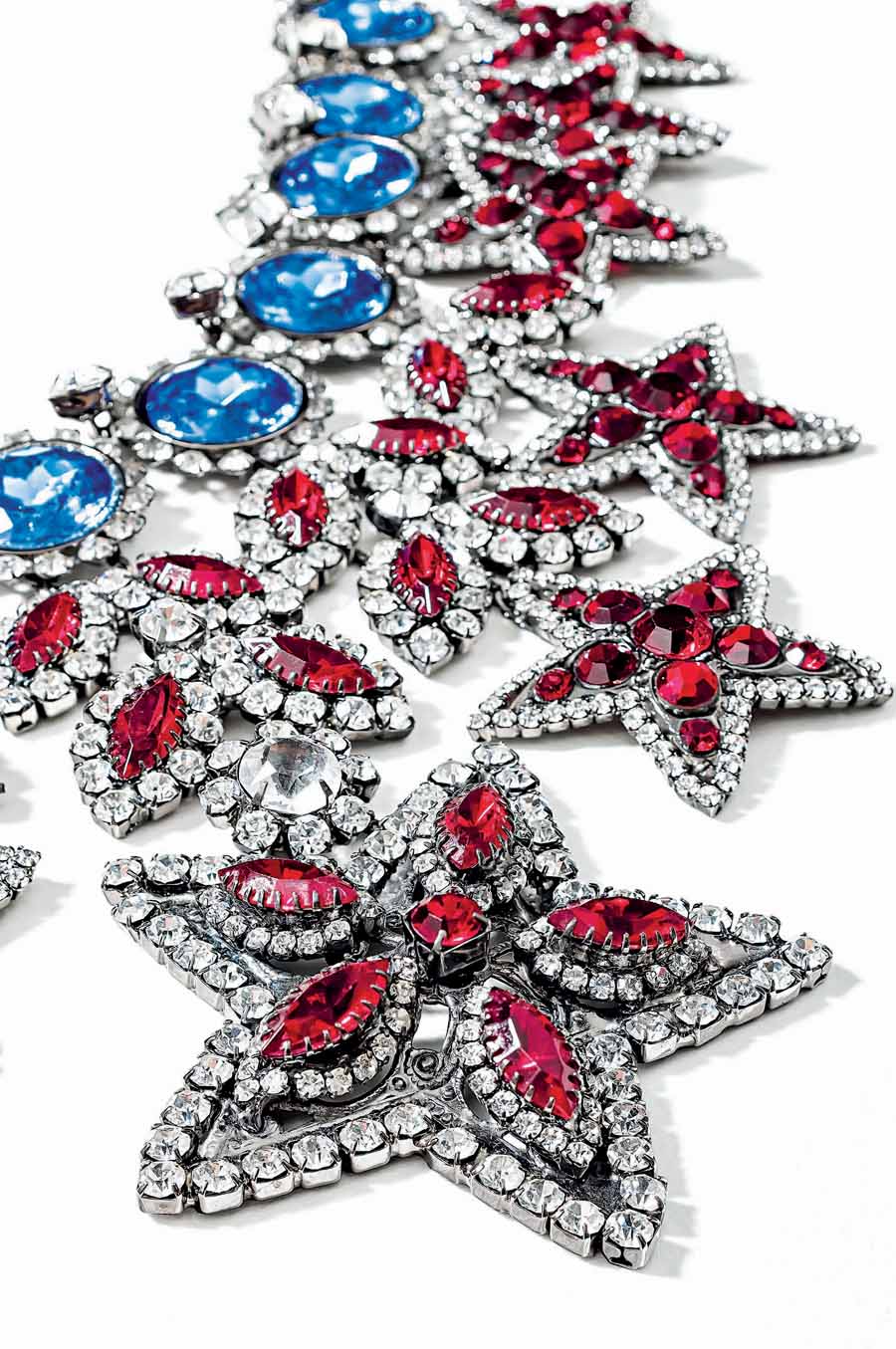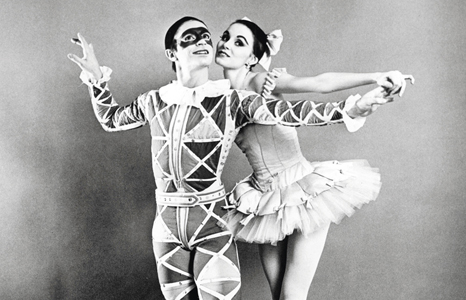Photographs courtesy Museum of the City of New York
When you step into “Gilded New York,” which recently opened at the Museum of the City of New York, be prepared to gasp.
Yes, the inaugural exhibition in The Tiffany & Co. Foundation Gallery is that dazzling.
It’s an evocative travel in time, a slipper-clad walk back into the city during the Gilded Age. It’s a time of diamond tiaras and French-made ball gowns, of calling cards tucked into engraved cases and tea sipped from hand-painted service collected on a grand tour of Europe.
The gallery and the installation of the exhibition have been designed by New York-based William T. Georgis Architects to evoke a Gilded Age domestic interior. And that it does, complete with herringbone wood flooring, decorative wallpaper, mirrored window shutters and lush drapery, all further enhanced by a historic chandelier that holds court mid-gallery and a fireplace mantel, both from the museum’s collections.
This yearlong exhibition is quite the exploration of the city’s visual culture at the end of the 19th century, a time when its most elite – think Vanderbilts and Astors and their crowd – allowed their fashions, jewelry and decorative arts to signal their status and wealth.
The exhibition has been organized by Donald Albrecht, the museum’s curator of architecture and design; Jeannine Falino, an independent curator and museum consultant; and Phyllis Magidson, the museum’s curator of costumes and textiles.
A companion book, also called “Gilded New York,” is co-published with The Monacelli Press. Edited by Albrecht and Falino, the volume features essay by both, along with Magidson and others.
The exhibition pieces were drawn from the museum’s collection but also tapped other institutions, companies and private collectors.
“It’s 40 percent the museum’s collection,” Albrecht says. Other items have been loaned from entities ranging from The Metropolitan Museum of Art to The Metropolitan Opera, from Tiffany & Co. to the Vanderbilt Mansion National Historic Site in Hyde Park.
Deciding what to include did provide a challenge, as is the case with most exhibitions.
“These things always evolve organically,” Falino, a New Rochelle resident, says with everything again falling into place “once you start to put together the picture of what that life was like.”
With items ranging from fine jewelry to oil paintings, sculpture to porcelains, peacock-feather fans to men’s walking sticks and pocket watches, the exhibition seems designed to have a wide appeal.
“I hope that it’s going to be very broad-based,” Magidson says. “Certainly connoisseurs will respond to the objects.”
Standouts range from the Rehan Jewel, a Marcus & Co. gold pin in the shape of morning glories – luminous with plique-à-jour enamel and created for stage actress Ada Rehan around 1900 – to the Tiffany & Co. diamond tiara created for the 1894 wedding of Julia Kemp, the daughter of pharmaceutical magnate George Kemp. There is incredibly detailed micro-mosaic jewelry, likely a souvenir from a visit to Italy, Venetian glass and stunning examples of decorative vases from England.
As Falino says, “They weren’t like the postcards that most of us bring home.”
Two Charles Frederick Worth gowns, which will be rotated with others over the course of the show, glimmer at the far end of the gallery anchoring a tableau in front of the fireplace.
“Our collection is acclaimed for its amazing group of Worth gowns,” Magidson says, in particular the incredibly detailed Electric Light gown worn by Alice Vanderbilt (wife of Cornelius II) to the Vanderbilt Ball and here displayed next to a vivid silk damask evening dress.
As Magidson says, “The red dress is no slouch either. It’s fiery red, Ferrari red.”
From case to case, wall to wall, one is easily enveloped into an earlier time, a way of life that simply doesn’t exist anymore.
It’s a bit of nostalgia, perhaps, that causes Falino to say, when explaining the practice of calling cards held in fanciful cases, “This was all before cellphones – obviously.”
For a time, though, it’s nice to step back. And when you do, don’t be tempted to rush past the introductory area, where continuously looped photographs on monitors take you from the famed 1883 Vanderbilt Ball to the pages of the society’s papers and magazines that chronicled society’s never-ending festivities.
As is pointed out, as well, while it was most definitely a time of splendor and excess, it was also a time of burgeoning national pride, an era when New York was establishing itself as a sophisticated destination for arts and design ready to compete, equally, on the world stage.
And that, in itself, is kind of dazzling.
“Gilded New York” continues to Nov. 30, 2014 at the Museum of the City of New York, 1220 Fifth Ave. (at 103rd Street), Manhattan. For more, visit mcny.org.




